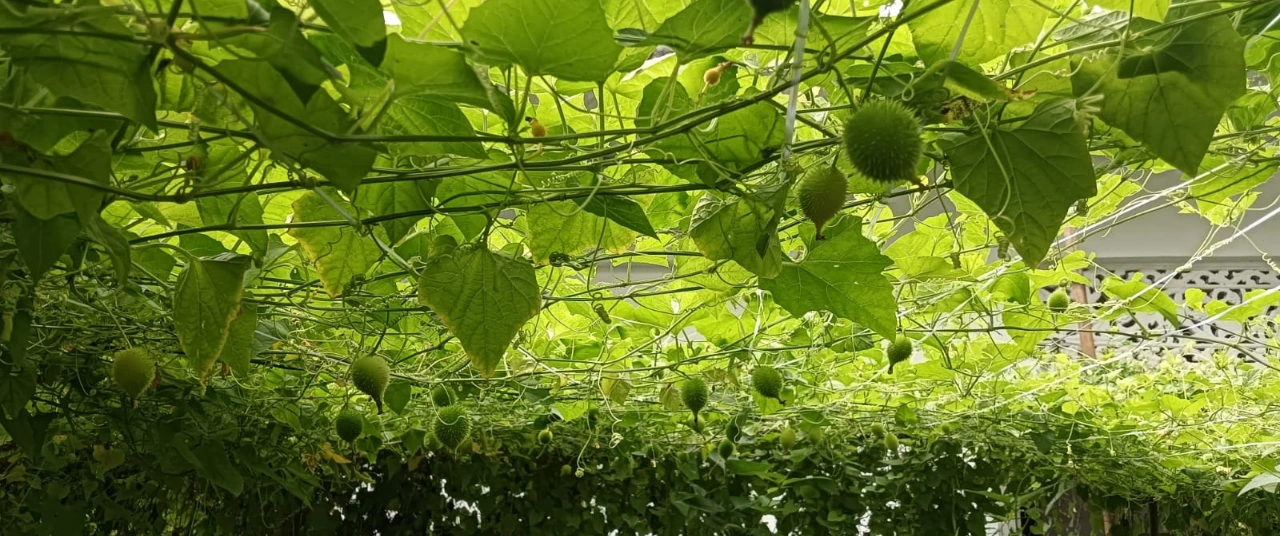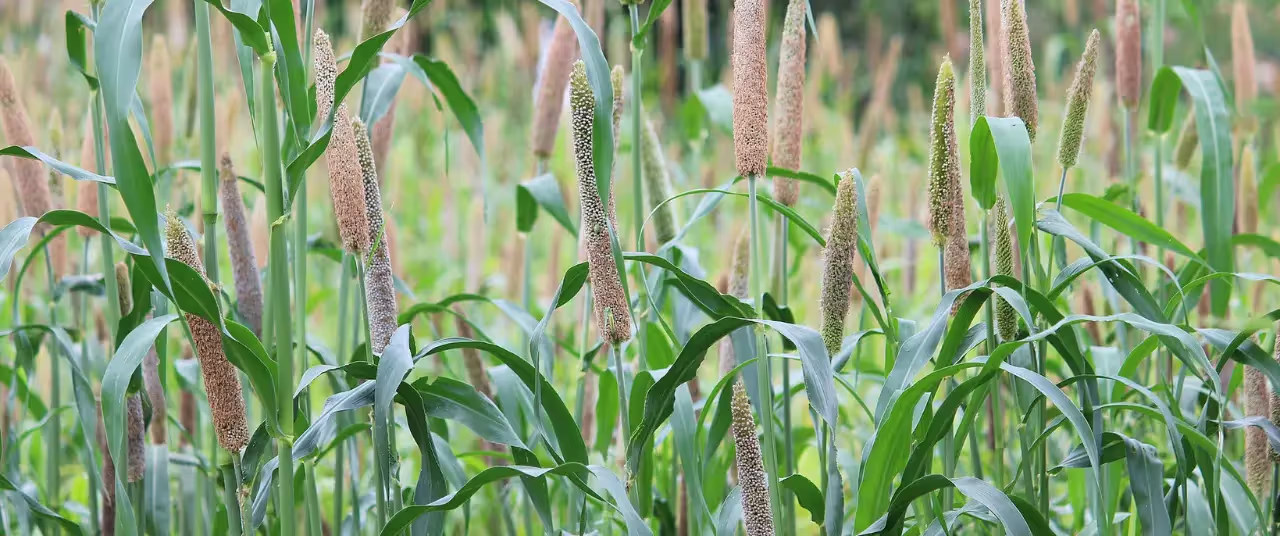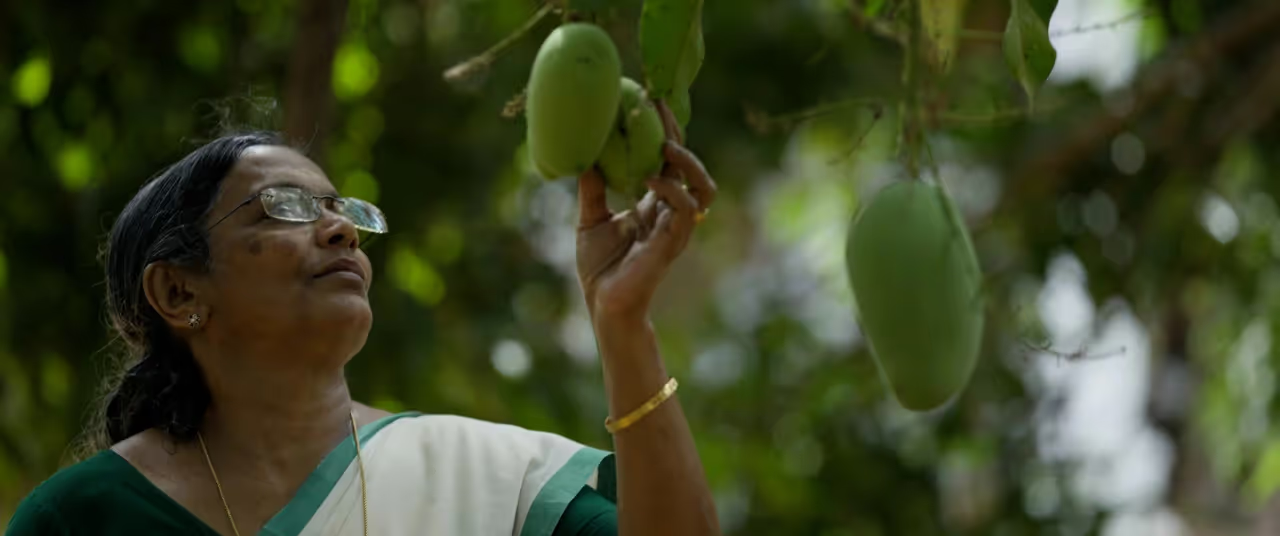Rajasthan-based Ghoomar sees tribal women as stakeholders with wisdom about forest produce and how to sustainably collect it






In the foothills of the Aravalli range, sitafal (custard apple) has always grown abundantly. Specifically, in the Bali block of Pali district, Rajasthan–where the women of the Garasia tribe have always collected these sweet, fleshy fruits. In fact, custard apples are one of the most abundant non-timber forest produce (NTFP) in the country–they are, in large parts, harvested from forests by communities like the Garasias, who then sell it to processing units or traders and markets. Rajasthan ranks eighth in custard apple production in India. Almost 5000 tons of India’s custard apples came from this state, in 2024.
In the last few years, a quiet but significant churn has been afoot in these remote villages and forests.
Earlier, an adivasi woman had to sell her produce at a throwaway price to the nearest buyer, earning nearly nothing in exchange for collecting the fruits from forests and hills. But now, she has a much higher chance of getting a fair price for her labour, adding significantly to her income.
This difference exists because there is now a producer company in this region—the Ghoomar Mahila Producer Company Ltd, which was established in 2015. Nearly 2000 such adivasi women are shareholders in the company, and improving the livelihoods of women engaged in the collection of various forms of non-timber forest produce (NTFP), is an integral objective of this social enterprise. This effort emerges as especially crucial when one considers the numbers: every year, millions of Indians belonging to scheduled tribes collect about Rs. 200,000 crores–or 2 trillion rupees–worth NTFP from India’s forests, as of 2020.
But the communities that collect the products do not receive these returns. This happens especially in the absence of an organised approach to the NTFP markets: though collectors contribute significantly to local economies, it’s the middle men that often gain the most. Ghoomar is trying to change this. However, they must also improve their capacity to pay a high and fair price to these women.
Also read: ‘Land ownership could alter women’s roles in agriculture’
Beyond buying and selling
The company achieves this by taking up several value-adding and processing activities. For instance, there is demand for custard apple pulp by natural-flavoured ice-cream makers–the fruit is valued both for its taste and high nutrition. Several catering units, too, are keen to obtain this pulp for preparing shakes. So, women are trained by Ghoomar to extract the pulp from the fruit in hygienic ways. Once properly trained, they can also take up this work at various decentralised units. This pulp is then frozen at the main plant before being sold.
In addition, adivasis here also collect a number of berries. The produce is then properly selected and graded by Ghoomar, eventually making it ready for sale in a neatly packaged form. In addition, Ghoomar uses the paste from these berries to produce sweets (laddus) and a lollypop-like berry stick.
Blackberries (jamun) are not as widely available in these parts, but Ghoomar’s work extends to parts of Udaipur district, too–where these fruits can be more easily obtained. They are sliced and frozen for sale, and a delicious drink called the ‘jamun shot’ is also prepared from the fruit.
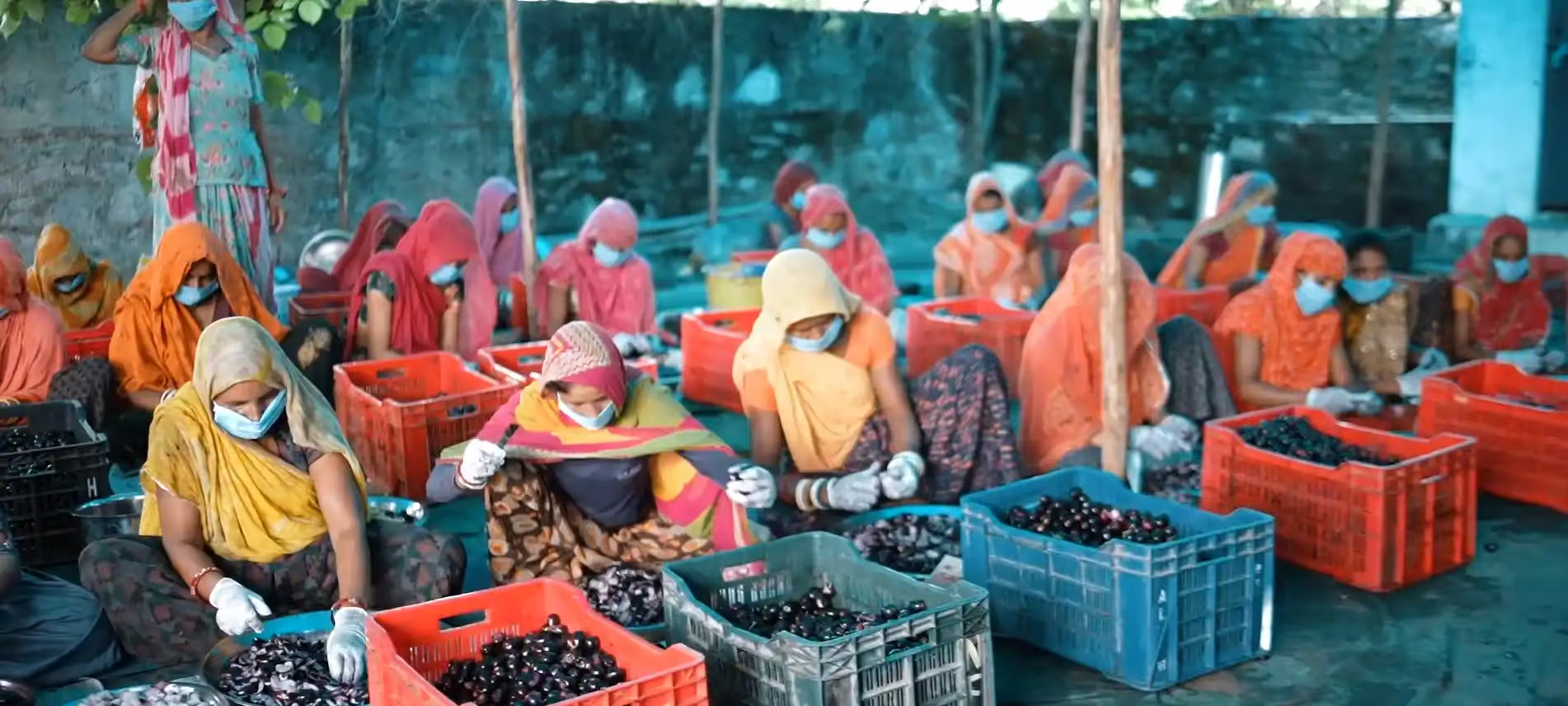
Non-edible natural products such as leaf cups and plates (dona pattas), fashioned from the leaves of the Palash tree, are among Ghoomar’s offerings. As biodegradable material, these can easily replace the plastic cups and plates that are increasingly employed for social gatherings in the region. In addition, the flowers of Palash trees are used to produce natural colours, including the gulal used in festivals like Holi.
It is these processing activities that enable Ghoomar to pay better prices to women who collect forest produce. It is, of course, a great bonus that such ventures increase opportunities for women to be gainfully employed in processing activities, over and above collecting.
Also read: One Odisha woman’s mission to preserve taste, tradition through seeds
Earning over ten times more
As a result of these growing opportunities, it is common to come across several Garasia women in these villages who now have a combined annual income of around Rs. 50,000 or more from these activities–compared to an income of less than Rs. 5000 before Ghoomar’s work took root here. Dharmi Bai, for example, was able to earn Rs. 79,450 in 2024. The annual income range for many women engaged in this work is likely to be between Rs. 20,000 and Rs. 80,000.
Most of these women are married, and for many of them, collecting and processing forest produce is their only source of earning. So, they also benefit from being members of self-help groups linked to a sister organisation—Ghoomar Mahila Samiti. This provides them with access to savings and low-interest loans–on the basis of which, they can start small enterprise units on their own, also linked in helpful ways to the main company.
An effort like Ghoomar, driven forward by the work of adivasi community members, is inherently capable of harvesting forest products in ways that are more sustainable. Their knowledge of forests and tree protection equip them with an instinctive ability to know the right stage when fruits must be plucked—in order to prevent wastage and promote proper utilisation. In the process, harm to the forest is minimised, and the skills of the adivasi women can be amplified through training programmes.
This is a far cry from the approach taken by commercial agents from big cities, say locals, who tend to use discriminate methods to collect produce from the villages. In the absence of mindful techniques, this results in a shorter harvest season. The stark contrast in collection methods should prompt authorities to encourage initiatives that center adivasi wisdom at a policy level.
Also read: Bastar’s secret ingredient? The power of preservation
Adivasi women as stakeholders
Ghoomar was conceptualised and planned at an early stage by a voluntary organisation called Self-Reliant Initiatives through Joint Action, or SRIJAN. At a certain stage of progress, SRIJAN handed over this effort with great potential to the community, but remained available for any technical support if required.
This model of utilising NTFP has a number of seen and unseen benefits. When only the pulp of custard apple is sold, the outer covering of the fruit remains with the community–it can be decomposed and used as manure, and the hard seeds can be spread in forests and wasteland to encourage further growth of trees. Similarly, when jamun pulp is used up, its seeds can be used separately to make medicinal products.
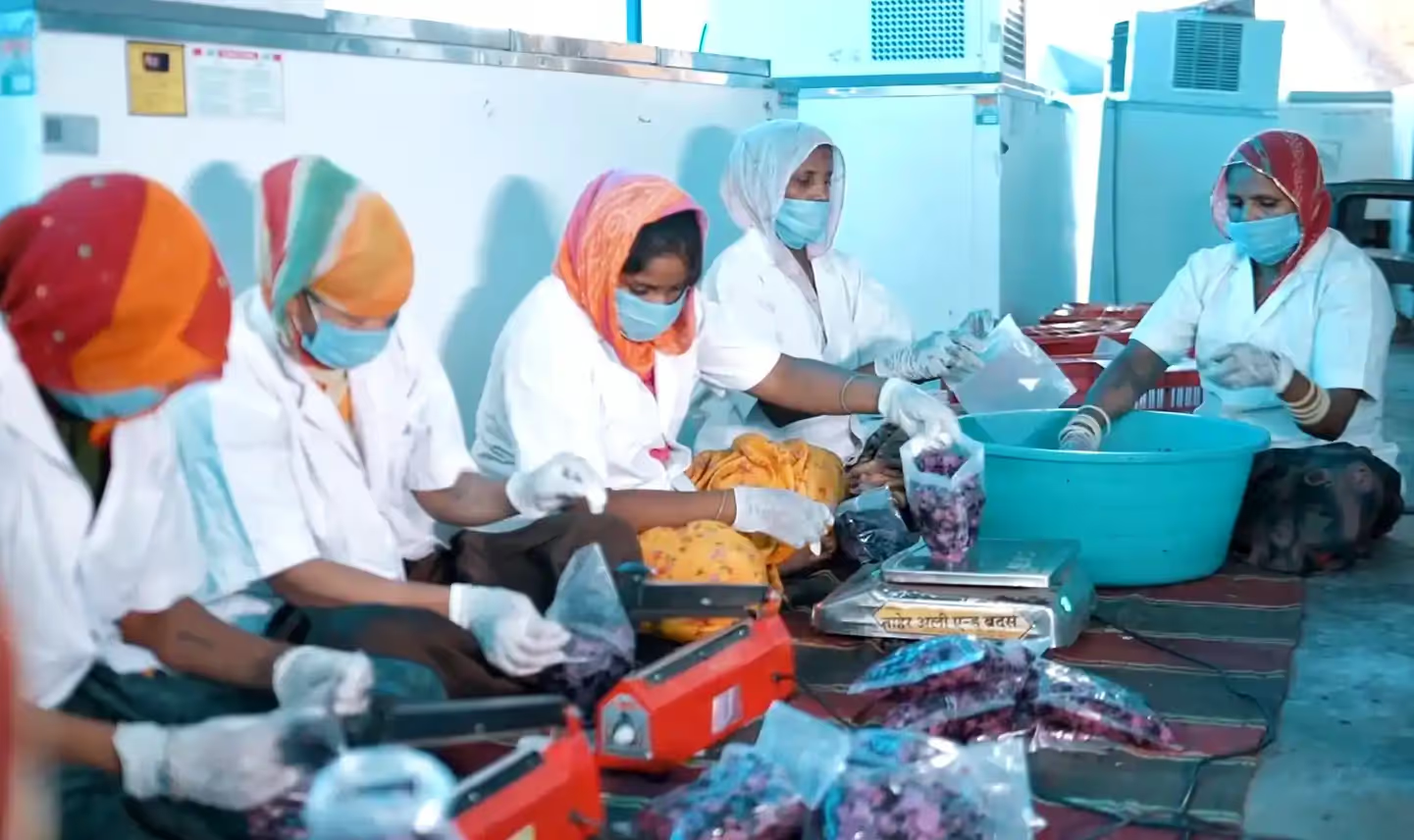
Similar potential is also evident in another such effort: a producer company of farmers, called Dolmashree which is at an early stage of development in the Suhagpura block of Pratapgarh district, Rajasthan. In the villages here, inhabited by Meena tribals, there are plenty of Mahua trees whose seeds are collected. But oil from this tree has to be extracted elsewhere. Once these communities are able to acquire their own processing unit, not only will they get better quality oil without having to pay others for it, the oil cake will also remain with them.
In the Pratapgarh venture, where the initial work in the community is also being supported by SRIJAN, women members of the producer company have achieved significant progress in creating orchards and vegetable gardens based on natural farming; the processing of cultivated products has great potential.
Ventures such as these, where adivasi women are shareholders, have the potential to improve, all at once, livelihoods, nutrition as well as health. It all goes back to a sustainable and smart ecological approach to our forests: processing and marketing forest produce, working produce from village trees as well as cultivating products based on natural farming methods.
{{quiz}}
Explore other topics
References




.avif)

.avif)
